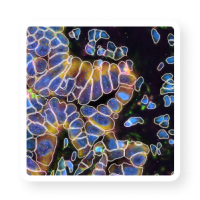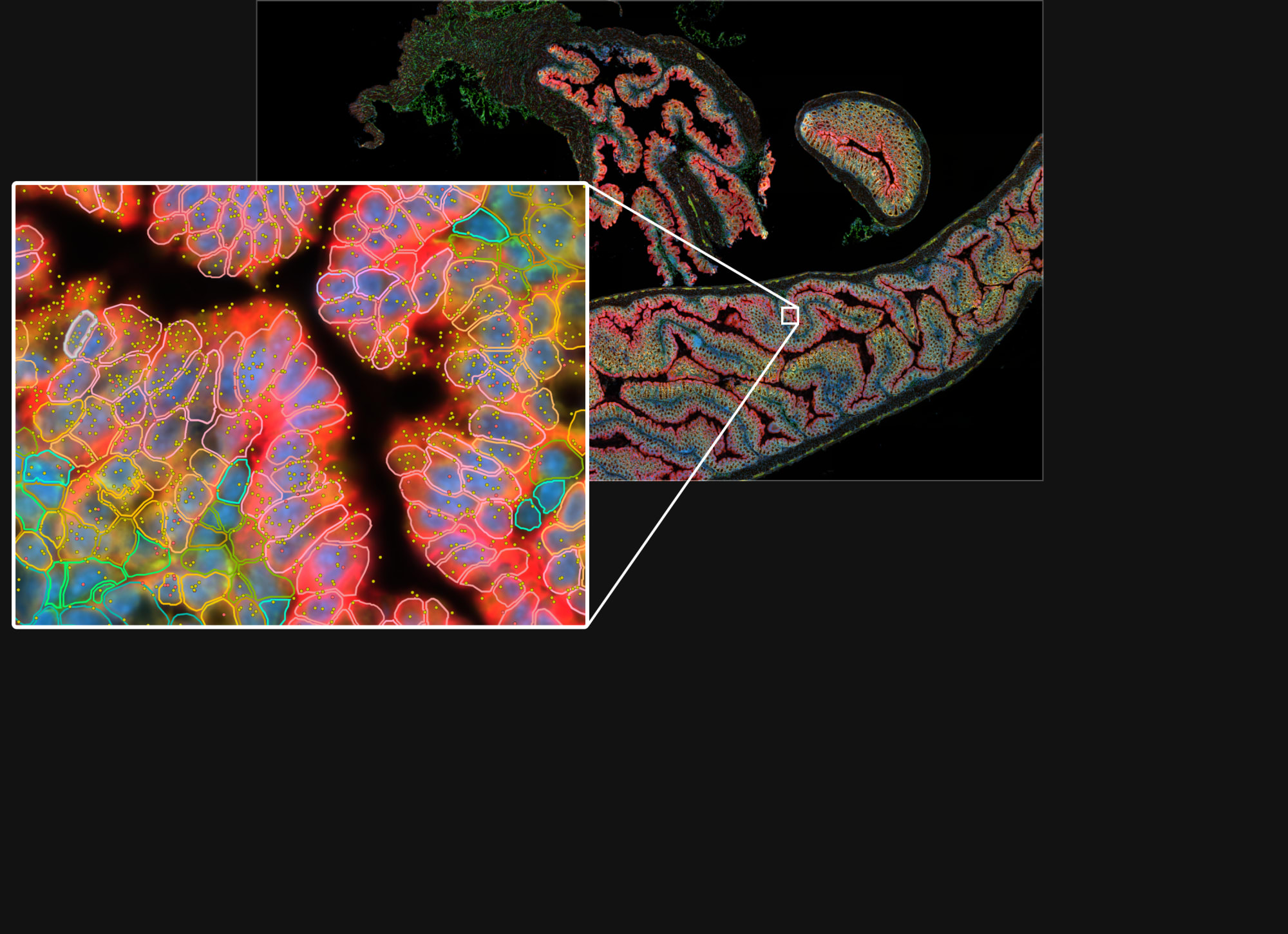The ultimate single cell spatial biology experience
The Xenium platform delivers high-plex in situ at subcellular resolution with nanometer precision and offers a complete solution, including comprehensive panel offerings, to achieve fast and robust single cell spatial insights.

Gene panels
Customizable pre-designed or fully custom gene panels
Xenium Analyzer instrument
Industry-leading speed and throughput for single cell spatial imaging
Data analysis
Powerful on-board analysis and Xenium Explorer visualization software

Xenium Prime 5K assays now shipping
An ultra-high-plex assay with exceptional data quality
- Explore your tissue with 5,000 genes to deeply characterize cell types, pathways, cell-cell interactions & more
- Get greater confidence in your results with an optimized assay, multimodal cell segmentation & high spatial fidelity
- Obtain results faster with up to 472 mm² of tissue analyzed in 6 days or less
Built for rapid data exploration
Immediate data access
Access your data as soon as the Xenium run is complete.

Easy-to-use interface
Intuitively visualize morphology, segmentation, cell typing, and transcript density—no bioinformatics experience required.

Explore at any scale
Seamlessly explore your data at any scale, from whole tissue sections to single transcripts.

A state-of-the-art single cell spatial imaging instrument
- Seamlessly integrates transcript detection workflow, high-resolution imaging, decoding, and onboard data analysis for fresh frozen or FFPE tissues
- Simple run setup and cleanup operations, an intuitive touchscreen, and ergonomic design make instrument operation a breeze
- Go from tissue section to data for up to 5,000 genes in ≤6 days (or get even faster analysis times with smaller gene panels)


Diverse panel menu to fit any research need
- Comprehensive off-the-shelf menu of 10+ pre-designed gene panels, ranging from 50 to 5,000 genes
- Build fully custom panels of up to 480 genes or add up to 100 genes to a pre-designed panel with our Custom Panel Designer
- Add T- and B-cell receptors, SNVs, and isoforms with advanced custom design services

Xenium Catalyst Program
Discover the power of Xenium technology with our in-house pilot run service
Our Catalyst program lets you test drive the Xenium platform, evaluate its capabilities, and explore your spatial transcriptomics data alongside a team of scientific experts.
End-to-end service completed in as few as
4 weeks
Complete access to fully custom or
10+ panels

Resources

See Xenium data in action
Explore our 5,000-gene human ovarian cancer dataset and post-Xenium H&E images.

Get to know the Xenium platform
Explore the unique platform features, from padlock chemistry to panels, that power the ultimate single cell spatial biology experience.

Grant writing assistance
Get the information you need to write grants featuring Xenium experiments (including technology overview, benchmarking data, and more).
See what Xenium users are saying
Unlock the full spectrum of biology
Build on your Xenium Spatial insights with comprehensive, whole transcriptome single cell and spatial analysis.
Platform |  Chromium Single Cell platform |  Visium Spatial platform |  Xenium Spatial platform |
|---|---|---|---|
When to use | Comprehensive single cell data Ideal for deep characterization of cell populations and states. | High-resolution spatial gene expression Understand complex tissues, neighborhoods, and cell to cell interactions. Integration with other spatial-omics, histology, and morphology. | |
Why to use | Unbiased single cell discovery High per-gene sensitivity | Unbiased spatial discovery | Targeted spatial exploration High per-gene sensitivity |
Applications | Whole transcriptome gene expression Protein TCR, BCR CRISPR ATAC | Whole transcriptome gene expression | Targeted gene expression (up to 5,000 genes) |
Resolution | Single cell | Transcripts assigned to 2-µm areas | Single cell |
Data readout | NGS-based | NGS-based | Imaging-based |
Sample compatibility | Single cell or nuclei suspensions from fresh, frozen, or FFPE samples | FFPE Fresh frozen Fixed frozen | Fresh frozen FFPE |
